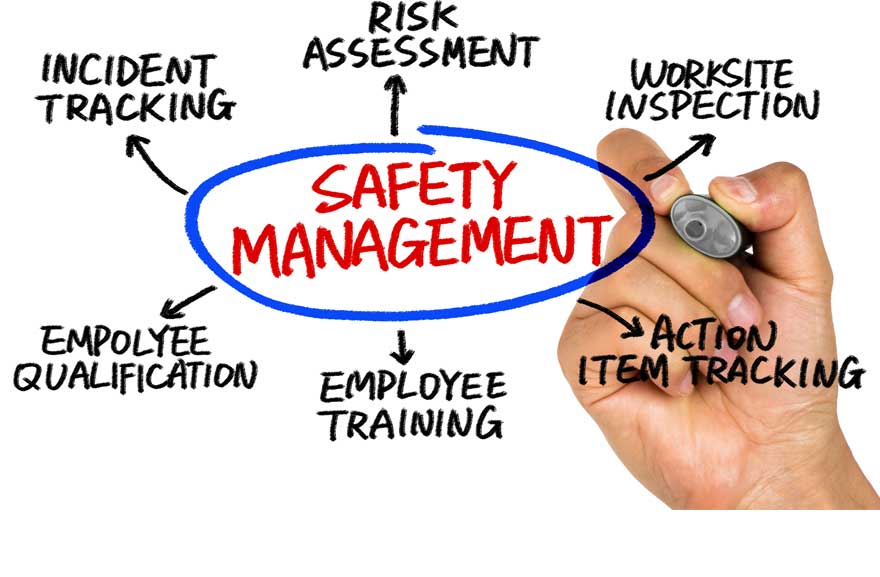Understanding Process Safety Management
Process Safety Management (PSM) is a crucial framework designed to minimize the risk of hazardous incidents in industrial operations. It involves a systematic approach to identifying, evaluating, and controlling the hazards associated with chemical processes. Industries dealing with chemicals, oil and gas, pharmaceuticals, and manufacturing benefit significantly from implementing PSM, as it enhances safety and ensures regulatory compliance.
PSM is not just about preventing disasters; it also improves operational efficiency by optimizing workflows, reducing downtime, and fostering a proactive safety culture. By integrating Process Safety Management into daily operations, businesses can enhance productivity while maintaining high safety standards.
Key Components of Process Safety Management
To improve operational efficiency, businesses must focus on the following core components of PSM:
- Hazard Identification and Risk Assessment (HIRA): Identifying potential risks in industrial processes helps prevent accidents and optimizes resource allocation.
- Management of Change (MOC): Ensuring proper documentation and evaluation of any changes in process conditions, equipment, or personnel prevents disruptions.
- Incident Investigation: Learning from past incidents allows industries to develop better risk management strategies, reducing future operational risks.
- Emergency Preparedness: Having well-structured emergency response plans improves response time and minimizes the impact of unexpected incidents.
- Training and Competency Development: Ensuring employees are well-trained improves operational efficiency by reducing human errors and enhancing compliance.
How Process Safety Management Enhances Operational Efficiency
1. Reduces Unplanned Downtime
Unplanned downtime in industrial facilities can result in significant financial losses. Equipment failures, chemical spills, or safety incidents can halt operations unexpectedly. Implementing a Hazop Study helps industries identify potential hazards and failure points before they escalate. By proactively addressing these risks, companies can ensure smooth and uninterrupted operations.
2. Optimizes Resource Utilization
A well-implemented PSM strategy ensures that resources—whether human, material, or financial—are used efficiently. By mitigating risks, industries can prevent wastage, streamline production processes, and maximize output.
For example, conducting a Fire Audit helps industries ensure that fire safety measures are in place, reducing the risk of property damage and operational interruptions. Proactively addressing fire hazards leads to better resource management and cost savings.
3. Enhances Workplace Safety and Compliance
Ensuring worker safety is a top priority for industries. Implementing a Safety Audit helps businesses identify potential risks and regulatory gaps. When safety standards are maintained, employees feel secure, leading to increased morale, productivity, and efficiency.
Compliance with safety regulations also prevents legal complications and financial penalties. This proactive approach ensures that the organization functions smoothly while maintaining high safety standards.
4. Improves Equipment Reliability and Maintenance
A well-structured PSM program includes preventive maintenance strategies that enhance the reliability of industrial equipment. Regular inspections and hazard assessments help in early detection of faults, reducing the likelihood of machinery breakdowns.
For instance, industries that integrate PSM with predictive maintenance technologies experience fewer equipment failures. This proactive maintenance strategy not only prevents unexpected shutdowns but also extends the lifespan of machinery, resulting in long-term cost savings.
5. Strengthens Supply Chain Resilience
An efficient supply chain is essential for smooth industrial operations. PSM helps identify potential risks in supply chain processes, ensuring timely delivery of raw materials and finished products. By analyzing risks associated with transportation, storage, and handling of hazardous materials, industries can prevent supply chain disruptions.
A robust safety management framework ensures that suppliers and vendors adhere to safety standards, reducing the risk of contamination, accidents, or delays in production.
6. Promotes a Safety-Driven Culture
A strong safety culture directly impacts operational efficiency. When employees prioritize safety, they are more vigilant in identifying potential risks and following best practices. Engaging with a Safety Consultant helps organizations develop customized safety programs tailored to their operational needs.
Regular training sessions, hazard awareness programs, and open communication channels foster a culture where employees take ownership of safety practices. This leads to better decision-making, reduced incidents, and higher productivity.
7. Facilitates Continuous Improvement
PSM is an ongoing process that emphasizes continuous improvement. Organizations that implement regular safety assessments and audits can refine their operational strategies based on real-time data and insights.
By integrating technology-driven safety solutions such as IoT-based monitoring systems, industries can collect data on equipment performance, safety compliance, and risk levels. This data-driven approach helps organizations make informed decisions, optimize processes, and achieve long-term efficiency.
Conclusion
Process Safety Management is more than just a regulatory requirement—it is a critical driver of operational efficiency. By implementing hazard assessments, preventive maintenance, and strong safety protocols, industries can optimize resource utilization, reduce downtime, and enhance workplace safety.
A well-executed Hazop Study, Fire Audit, and Safety Audit contribute to the smooth functioning of industrial operations. Moreover, consulting with an experienced Safety Consultant ensures organizations develop effective safety strategies tailored to their specific needs.
By integrating Process Safety Management into daily operations, businesses can achieve sustainable growth, improve productivity, and ensure a safer work environment for all.

